- Cadmium resources, reserves and production
- Cadmium minerals are not found alone in commercial viable deposits. Cadmium’s abundance in the Earth’s crust is about 0.2 part per million (ppm). Greenockite (CdS), the only cadmium mineral of importance, is not found in any isolated deposits, but is nearly always associated with sphalerite (ZnS). Cadmium is usually produced as a byproduct in the recovery of primary zinc from zinc ores, and also from some lead ores or complex copper-lead-zinc ores. However, it is generally agreed that the cadmium in lead and copper ores is associated with the zinc sulfide present rather than with the other minerals.
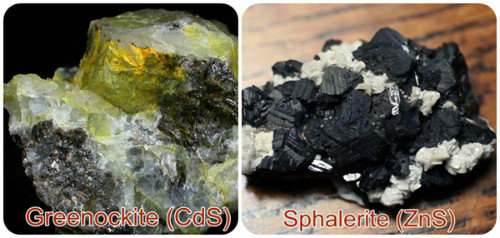
- Cadmium is generally recovered as a byproduct from zinc concentrates. Zinc-to-cadmium ratios in typical zinc ores range from 200:1 to 400:1. Sphalerite (ZnS), the most economically significant zinc mineral, commonly contains minor amounts of cadmium, which shares certain similar chemical properties with zinc and often substitutes for zinc in the sphalerite crystal lattice. The cadmium mineral greenockite (CdS) is frequently associated with weathered sphalerite and wurtzite. Zinc-bearing coals of the Central United States and Carboniferous age coals of other countries also contain large subeconomic resources of cadmium.
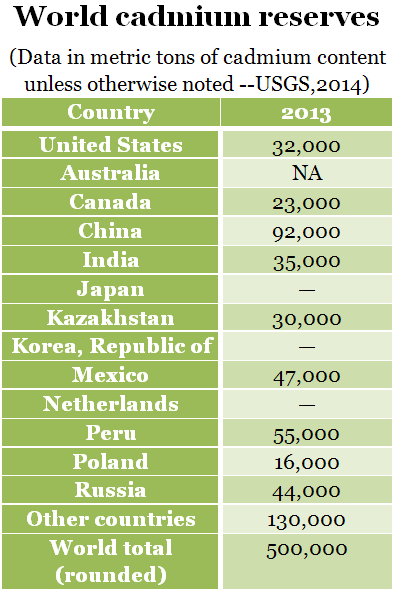
- According to the latest cadmium reserves data released by United Stated Geological Survey (USGS), in 2013, the estimated global cadmium reserves were said to be 500,000 tonnes. The US, Mexico, Peru, Russia and India are some of the countries possessing substantial cadmium deposits. China now has the biggest share of cadmium reserves as a single country.
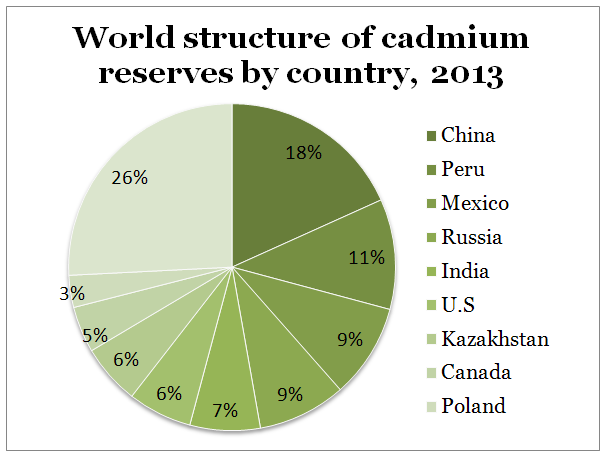
- Distribution of cadmium reserves in China
- Cadmium reserves mainly distributed in central, eastern and southwestern region in China. Yunnan province is one of the biggest cadmium-producing regions in China, where the environment is polluted seriously by cadmium.
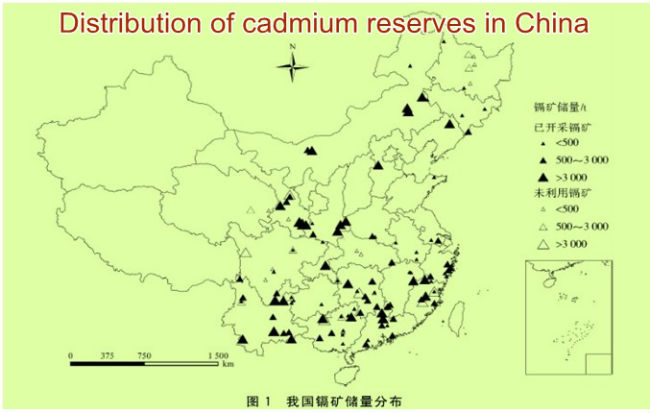
- In 2013, global cadmium production registered 4.3% year-on-year growth and exceeded 21,800 tonnes. Most of the world’s refined cadmium (66%) was produced in Asia (Australia, China, India, Japan, North Korea and the Republic of Korea), followed by 17% in Europe and Central Eurasia (Bulgaria, Kazakhstan, the Netherlands, Poland and Russia), 11% in North America (Canada and Mexico), and 3% in South America (Peru).
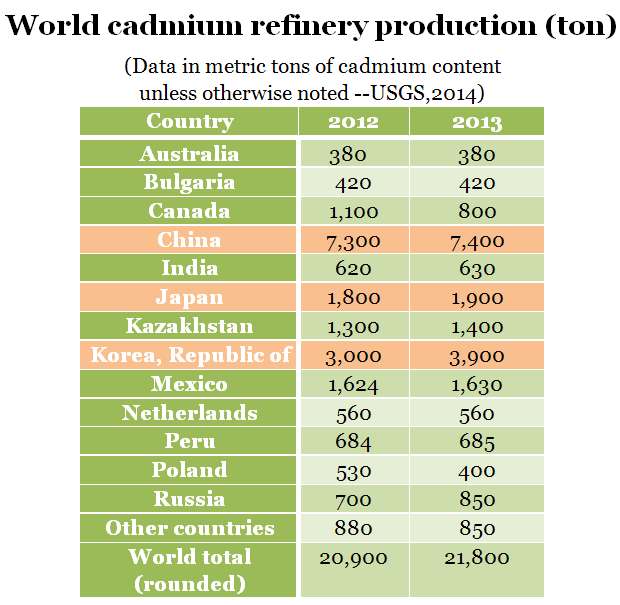
- China ranks as the leading cadmium producer in the world, accounting for almost 34% share of the global supply. South Korea is in second place with 17.8%. Japan occupies third place among world cadmium producers, contributing 8.7% to the total.
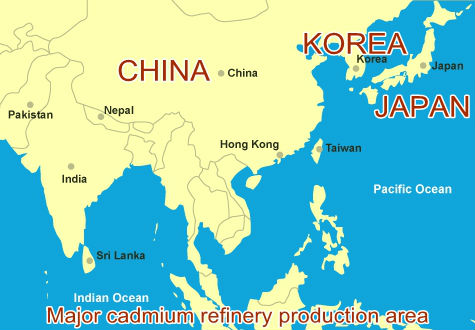
- The combined cadmium production volume of the top three producing countries stood at over 13,200 tonnes in 2013.
- Globally, secondary cadmium production was thought to have occupied approximately a quarter of all cadmium metal production. Most secondary metal was recovered at NiCd battery recycling facilities in Asia, Europe and the United States. Other waste and scrap from which cadmium can be recovered includes copper-cadmium alloy scrap, some complex nonferrous alloy scrap, and cadmium-containing dust from electric arc furnaces (EAF). The amount of cadmium recycled was not available.
- Cadmium production in China
- In 2013, the production volume of cadmium from the leading producer, China, stayed at 7,400 tonnes. Meanwhile, the volume of domestic product consumption registered a 36.1% year-on-year increase. China imports a substantial quantity of cadmium as demand outpaces the domestic supply. The Republic of Korea, Kazakhstan, Japan and Peru are the major suppliers of cadmium to China.
-
About us
Contact us
Make a suggestion
- Metalpedia is a non-profit website, aiming to broaden metal knowledge and provide extensive reference database to users. It provides users reliable information and knowledge to the greatest extent. If there is any copyright violation, please notify us through our contact details to delete such infringement content promptly.






